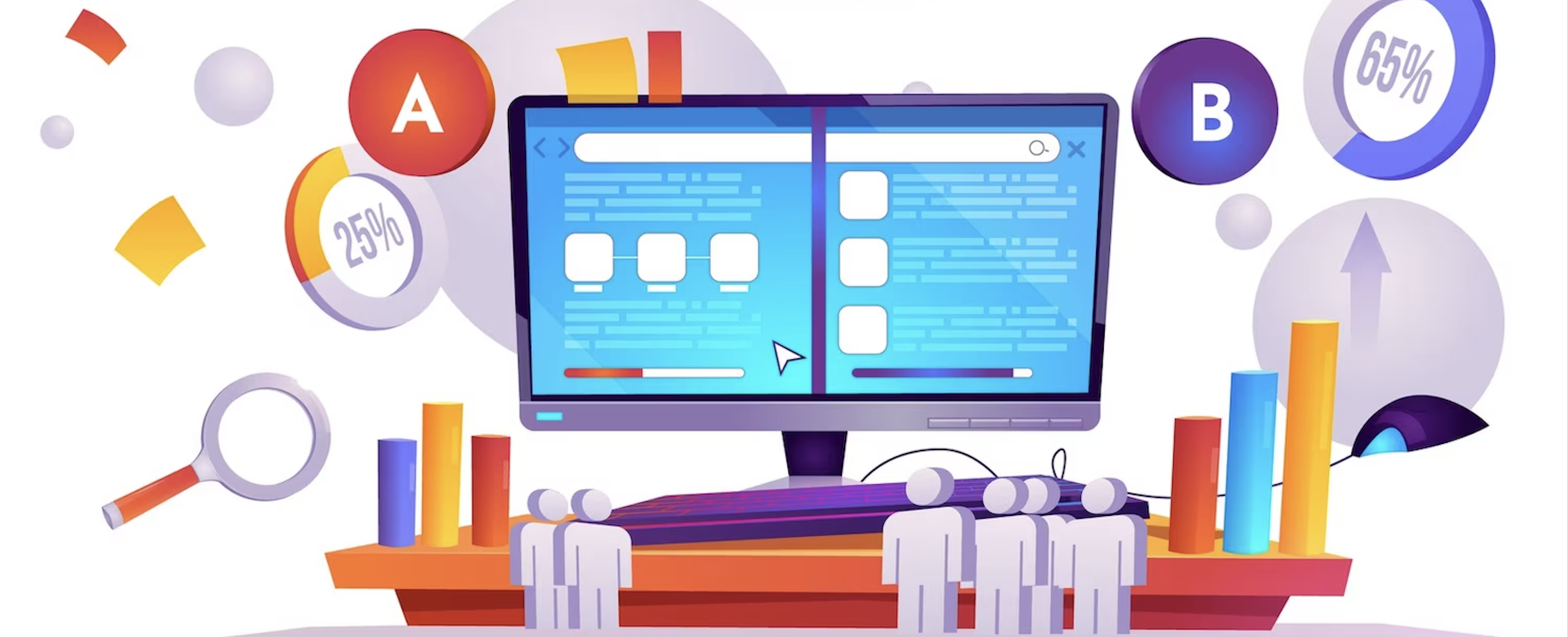Understanding A/B Testing
A/B testing is a popular method used in UX research to evaluate the effectiveness of different design options. In this article, we will explore the importance of A/B testing in UX research, how to conduct it, use cases and some best practices to keep in mind.
What is A/B testing?
A/B testing is a technique used to compare two versions of a design to determine which one performs better. In UX research, this technique is used to compare two different designs or variations of the same design to understand which one performs better in terms of user behaviour, engagement, and conversion.
How does A/B testing work?
A/B testing involves creating two different versions of a design element, such as a button or a page layout and showing it to the users. User behaviour, such as clicks, eye gaze, or conversions, is then measured and compared between the two versions to determine which one performs better.
For example, let's say a company wants to test two different versions of the website to see which one performs better. The first version of the website has a dark colour scheme, while the second version has a light colour scheme. The company decides to run an A/B test to see which version of the website has a higher conversion rate.
The company analyzes the results of the A/B test, and they find that the second version of the website has a higher conversion rate. The company decides to implement the second version of the website, and they see an increase in sales.
When to conduct A/B Testing?
A/B testing can be conducted at any stage of website design, but the most effective time to conduct A/B testing is during the design and development phase. This is because A/B testing can help you identify the most effective design elements, user interface, and user experience, which can save time and resources in the long run.
When conducting A/B testing during website designing, it's important to test different variations of your website design, such as layout, colour scheme, font, and images. This can help you identify the most effective design elements that resonate with your audience.
It's also important to conduct A/B testing on different devices, such as desktops, laptops, tablets, and mobile phones, as user behaviour can vary significantly depending on the device. By testing on different devices, you can ensure that your website is optimized for all types of users.
Furthermore, it's essential to conduct A/B testing on different segments of your audience to ensure that your website design is effective for all user groups. This can include testing different versions of your website on different demographics, such as age, gender, location, and interests.
Best Practices
Here are some best practices to keep in mind when conducting A/B testing:
- Clearly define your goals: Before conducting A/B testing, it's important to clearly define your goals and what you want to achieve. This will help you choose the right metrics to measure and ensure that your A/B testing is aligned with your business objectives.
- Choose the right metrics: When conducting A/B testing, it's important to choose the right metrics to measure. This will depend on your business goals and what you want to achieve. Common metrics include click-through rates, conversion rates, bounce rates, and time on the page.
- Monitor results regularly: A/B testing should be an ongoing process, and it's important to monitor your results regularly to identify any trends or changes in user behaviour. This will help you make informed decisions and optimize your online presence over time.
- Right Audience: It's essential to test on a representative sample of your target audience to ensure that your results are meaningful and relevant. This means selecting participants who match your target demographic, interests, and behaviour patterns.
Use Cases
Here are some use cases for A/B testing:
- Landing page optimization: A/B testing can be used to optimize landing pages for better conversion rates. By testing different variations of design elements such as headlines, images, call-to-action (CTA) buttons, and forms, businesses can determine which design leads to the highest conversion rate.
- Email marketing: A/B testing can be used to optimize email marketing campaigns for better open and click-through rates. By testing different variations of subject lines, email copy, and CTA buttons, businesses can determine which version of the email performs the best.
- Pricing strategy: A/B testing can be used to determine the most effective pricing strategy for a product or service. By testing different pricing models, such as tiered pricing or a flat rate, businesses can determine which pricing strategy leads to the highest revenue.
- Product features: A/B testing can be used to determine which product features are most appealing to users. By testing different variations of product features, such as the placement of a search bar or the size of product images, businesses can determine which version leads to the highest engagement and conversion rates.
- Ad campaigns: A/B testing can be used to optimize ad campaigns for better performance. By testing different variations of ad copy, images, and targeting options, businesses can determine which version of the ad leads to the highest click-through and conversion rates.
In all of these cases, A/B testing allows businesses to make data-driven decisions about their marketing and product strategies. By testing different variations of design elements and features, they can identify the most effective approach and improve their overall performance.

